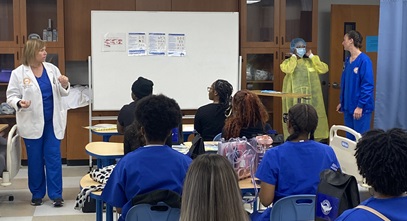Public concerns about the possible health effects of mobile phone usage receive a lot of attention.
With so many people using cell phones, it’s easy to see why. The International Telecommunication Union reported nearly 6 billion mobile phone subscriptions at the end of 2011. That’s 86 out of every 100 people worldwide.
Medical researchers continue to examine any health risks associated with mobile phone use. Research has focused on germs, traffic accidents, cancer, electromagnetic radiation, and health effects such as changes in brain activity and sleep patterns.
There has been much debate surrounding the possible health effects of cell phone use. People can avoid the health hazards by understanding what the risks are and how to avoid them.
Cell Phones and Germs
Mobile phones not only carry important data, but germs too. The average mobile phone user puts their phone in contact with several places where it can pick up germs.
In 2011, researchers from the London School of Hygiene & Tropical Medicine at Queen Mary, University of London found that one in six cell phones is contaminated with some sort of fecal matter, probably because their owners did not wash their hands with soap after using the toilet. Some of the phones were found to harbor E. coli bacteria from fecal origin. If ingested into the body, E. coli can cause fever, vomiting, and diarrhea.
Recently, students in an Environmental Health course at South University, Columbia sought to find out what germs live on cell phones. Swabbing a sample of 60 phones belonging to students, they found that phones were frequently contaminated with methicillin-resistant Staphylococcus aureus (MRSA).
“Staph aureus is always dangerous and MRSA forms are worse because they cannot be stopped easily,” says Dr. Robert J. Wolff, PhD, program director of Health Science at South University, Columbia, who teaches the class.
Staph skin infections, including MRSA, can quickly turn into deep, painful abscesses. The bacteria might remain confined to the skin, or burrow deeper into the body, causing potentially life-threatening infections in bones, joints, surgical wounds, the bloodstream, heart valves, and lungs.
Pedestrians using cell phones are just as dangerous as drivers using them.
Basically if your hands are very dirty, then your phone tends to also be very contaminated with the same type of bacteria. So, people are advised to wash their hands with soap and water. They can also use a hand sanitizer, and importantly, clean their mobile phones often using cloths and wipes that are safe to use on devices.
“A fairly dry towel can brush off many of the germs,” Wolff says. “The towel does not need to be very wet, which can be harmful to the device.”
Cell Phones and Traffic Hazards
People also put themselves in potentially hazardous situations with their phones in hand. Using a cell phone while driving is dangerous.
A recent study by the Centers for Disease Control and Prevention compared the percentage of distracted drivers in the United States and seven European countries. According to the study, 69% of drivers in the United States ages 18-64 reported that they had talked on their cell phone while driving within the 30 days before they were surveyed. In Europe, this percentage ranged from 21% in the United Kingdom to 59% in Portugal.
Meanwhile, 31% of U.S. drivers ages 18-64 reported that they had read or sent text messages or email messages while driving at least once within the 30 days before they were surveyed. In Europe, this percentage ranged from 15% in Spain to 31% in Portugal.
In addition to providing a comparison between those activities in the U.S. and Europe, the study gives insight into the prevalence of self-reported mobile device use while driving.
Activities such as texting take the driver’s attention and hands away from driving more frequently and for longer periods than other distractions, making it dangerous. Younger, inexperienced drivers under the age of 20 may be at a higher risk; they have the highest proportion of distraction-related fatal crashes.
But it’s not just drivers causing dangerous situations on the roadways.
“Pedestrians using cell phones are just as dangerous as drivers using them,” Wolff says.
A study published in Injury Prevention last year says that one in three pedestrians is distracted by a mobile device while crossing busy streets. This type of distraction could lead to accidents that injure the pedestrian and/or drivers.
Traffic accidents are preventable. By simply putting their phone away while driving or crossing the street, drivers and pedestrians can prevent accidents. They should wait until they are stationary before making a phone call, sending a text message, or sending an email.
Cell Phones and Eye Health
Small text and bright screens can strain mobile phone users’ eyes. Since tablet computers, smartphones, and other hand-held devices are designed for reading at close range, users’ eyes must constantly refocus and reposition to process the graphics and text on screen.
According to The Vision Council, more than a third of U.S. adults reported spending four to six hours a day with digital media or related electronic devices. As digital use increases, so do potential vision problems, including eye strain. Symptoms of digital eye strain include eye redness or irritation, dry eyes, blurred vision, back pain, neck pain, and headaches.
Some of the ways to prevent digital eye strain include reducing glare, cleaning the screen, dimming the surrounding lighting that is competing with the device’s screen, keeping adequate distance between eyes and the screen, and increasing text size. Device users are also advised to take breaks from looking at the screen, and follow the “20-20-20” rule: Take a 20-second break every 20 minutes using an electronic device and look at something 20 feet away.




